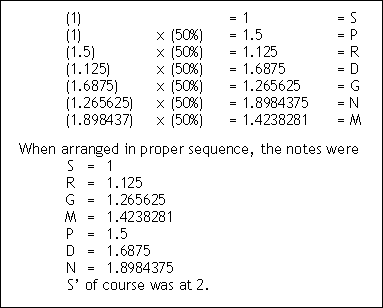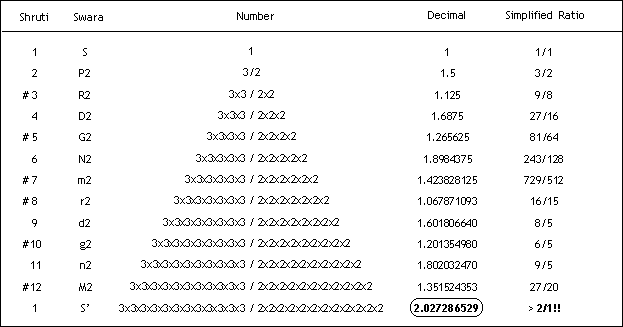We will need to understand few other mathematically relevant points before we are able to understand the detail mathematics of 22 Shrutis. Pythagoras had worked out his own scale of notes called as 'Pythagorean Octave'.
As he was a Mathematician, his method of finding the positions of notes was simply a cycle of Panchams which are called 'Pure fifths' in the West.
When Shadja has a frequency of 100 Hz, Pancham can be found only and accurately on 150 Hz. Progressively, he found further notes at 50 % addition of previous notes till he completed his octave.
As, such a Pancham is also accurately judged by the brain, this is not only a mathematically elegant system, but also one of the easiest to tune by ear. (Refer to following table)

Table shows the mathematical creation of Pythagorean Octave


The west is amazing. Sorry to point out. But Pythogoras is not the originator of this math. It is time the credit is rightfully attributed. Chinese mathematicians were aware of the Pythagorean comma as early as 122 BC (its calculation is detailed in the Huainanzi), and circa 50 BC, Ching Fang discovered that if the cycle of perfect fifths were continued beyond 12 all the way to 53, the difference between this 53rd pitch and the starting pitch would be much smaller than the Pythagorean comma. This much smaller interval was later named Mercator's comma (see: history of 53 equal temperament).
I am sure most mathematical advances after the colonization was from Asia.